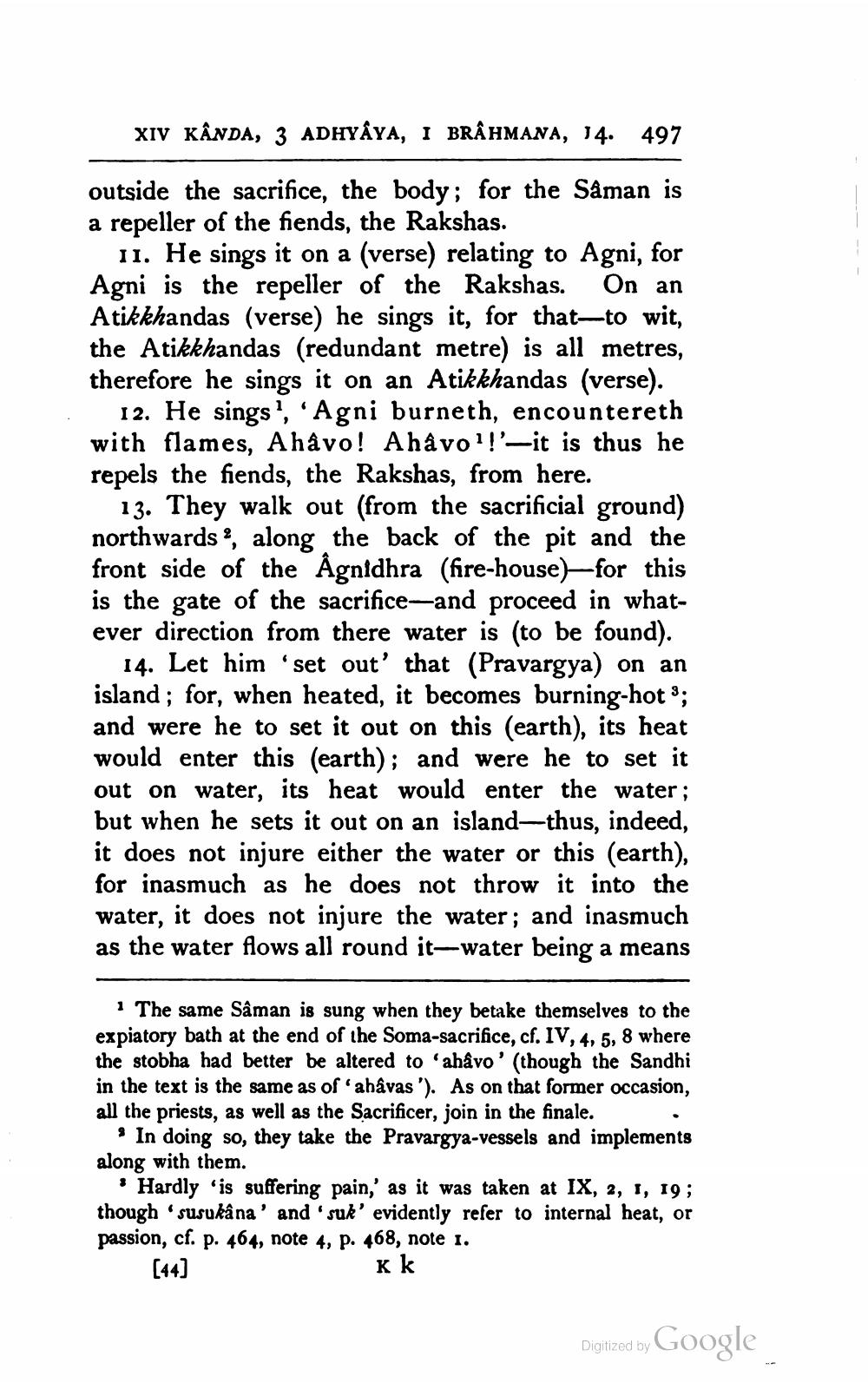________________
XIV KÂNDA, 3 ADHYAYA, I BRÂHMANA, 14. 497
outside the sacrifice, the body; for the Såman is a repeller of the fiends, the Rakshas.
11. He sings it on a (verse) relating to Agni, for Agni is the repeller of the Rakshas. On an Atikkhandas (verse) he sings it, for that—to wit, the Atikkhandas (redundant metre) is all metres, therefore he sings it on an Atikkhandas (verse).
12. He sings', 'Agni burneth, encountereth with flames, Ahâvo! Ahà vo1!'-it is thus he repels the fiends, the Rakshas, from here.
13. They walk out (from the sacrificial ground) northwards ?, along the back of the pit and the front side of the Âgnidhra (fire-house)—for this is the gate of the sacrifice-and proceed in whatever direction from there water is (to be found).
14. Let him 'set out' that (Pravargya) on an island; for, when heated, it becomes burning-hot 3; and were he to set it out on this (earth), its heat would enter this (earth); and were he to set it out on water, its heat would enter the water; but when he sets it out on an island-thus, indeed, it does not injure either the water or this earth), for inasmuch as he does not throw it into the water, it does not injure the water; and inasmuch as the water flows all round it-water being a means
1 The same Sâman is sung when they betake themselves to the expiatory bath at the end of the Soma-sacrifice, cf. IV, 4, 5, 8 where the stobha had better be altered to 'ahâvo' (though the Sandhi in the text is the same as of ahavas '). As on that former occasion, all the priests, as well as the Sacrificer, join in the finale.
* In doing so, they take the Pravargya-vessels and implements along with them.
Hardly 'is suffering pain,' as it was taken at IX, 2, 1, 19; though susu kâ na' and 'suk' evidently refer to internal heat, or passion, cf. p. 464, note 4, p. 468, note 1.
[44]
Kk
Digitized by Google




